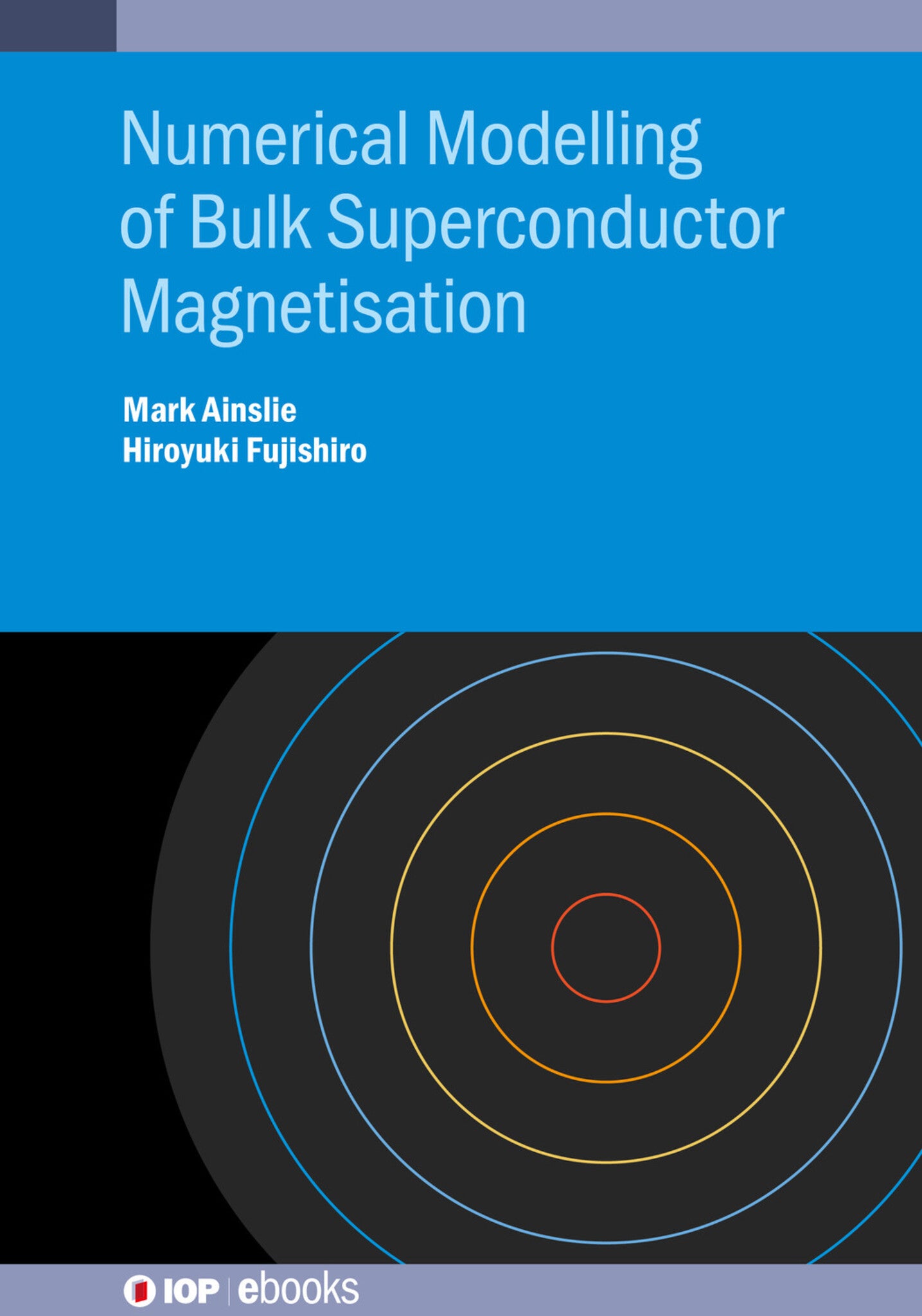We're sorry. An error has occurred
Please cancel or retry.
Numerical Modelling of Bulk Superconductor Magnetisation

Some error occured while loading the Quick View. Please close the Quick View and try reloading the page.
Couldn't load pickup availability
- Format:
-
13 November 2019

This book provides readers with numerical analysis techniques to model the magnetisation of bulk superconductors based on the finite element method. Applications of magnetised bulk superconductors are wide ranging in engineering due to their greatly enhanced magnetic field compared to conventional magnets. Their uses include rotating electric machines, magnetic resonance imaging (MRI), nuclear magnetic resonance (NMR) systems and magnetic separation. Numerical modelling is a particularly important and cost-effective method to guide both superconducting material processing and practical device design. It has been used successfully to interpret experimental results and the physical behaviour and properties of bulk superconductors during their various magnetisation processes, to predict and propose new magnetisation techniques and to design and predict the performance of bulk superconductor-based devices.
The necessary fundamentals of bulk superconducting materials, how to model these and their various magnetisation processes are presented along with an in-depth summary of the current state-of-the-art in the field, and example models, implemented in the software package COMSOL Multiphysics®, are provided so that readers may carry out modelling of their own.

SCIENCE / Physics / Condensed Matter, Condensed matter physics (liquid state and solid state physics), COMPUTERS / Data Science / Data Modeling & Design, SCIENCE / Physics / Electromagnetism, SCIENCE / Physics / Magnetism, Mathematical modelling, Electricity, electromagnetism and magnetism, Engineering applications of electronic, magnetic, optical materials

Dr Mark Ainslie
would like to acknowledge financial support from a Royal Academy of
Engineering Research Fellowship and an Engineering and Physical Sciences
Research Council (EPSRC) Early Career Fellowship EP/P020313/1.
TABLE OF CONTENTS
CHAPTER 1: Foreword/introduction
CHAPTER 2: Fundamentals of bulk superconducting materials
2.1 Bulk superconductors
2.2 Magnetic properties of bulk superconductors
2.2.1 Superconducting material classifications
2.2.1.1 Low- and high-temperature superconducting materials
2.2.1.2 Type I and II superconductivity
2.2.1.3 Irreversibility field
2.2.2 Flux pinning and field trapping
2.2.3 Flux creep
2.3 Fabrication processes
2.3.1 Bulk (RE)BCO superconductors
2.3.2 Bulk MgB2 superconductors
2.3.3 Bulk iron-pnictide superconductors
2.4 Magnetisation of bulk superconductors
2.4.1 Pulsed field magnetisation
2.5 Bulk superconductor applications
2.5.1 Flux pinning applications
2.5.1.1 Levitation
2.5.1.2 Magnetic bearings, flywheel energy storage and superconducting mixers
2.5.2 Flux trapping applications
2.5.2.1 Magnetic separation
2.5.2.2 Rotating machines
2.5.2.3 Portable NMR/MRI systems
2.5.2.4 Lorentz force velocimetry
2.5.2.5 Other applications
2.5.3 Flux shielding applications
2.5.4 Magnetic lens
2.5.5 Conductor alternative
CHAPTER 3: Numerical modelling of bulk superconducting materials
3.1 Modelling of bulk superconductors
3.1.1 Analytical techniques
3.1.2 Numerical techniques
3.2 Finite element method
3.2.1 Modelling bulk superconductors using FEM
3.2.1.1 Geometry, including magnetisation fixture
3.2.1.2 Electromagnetic formulation
3.2.1.2.1 H-formulation
3.2.1.3 Electrical properties
3.2.1.3.1 Critical current density, Jc(B, T)
3.2.1.3.2 E-J power law
3.2.1.3.3 Electromagnetic boundary conditions
3.2.1.4 Thermal properties & electromagnetic-thermal coupling
CHAPTER 4: Modelling magnetisation of bulk superconductors
4.1 Magnetisation of bulk superconductors
4.1.1 Zero-field-cooled (ZFC) & field-cooled (FC) magnetisation
4.1.1.1 Simulation of ZFC magnetisation
4.1.1.2 Simulation of FC magnetisation
4.1.1.3 Case study #1: MgB2 bulks
4.1.1.4 Case study #2: Iron-pnictide bulks
4.1.2 Pulsed field magnetisation
4.1.2.1 Basic model
4.1.2.2 Influence of PFM parameters on trapped fields
4.1.2.3 Case study #3: PFM of bulk HTS materials using a split coil with an iron yoke
CHAPTER 5: Demagnetisation & novel, hybrid bulk superconductor structures
5.1 Demagnetisation effects & AC losses
5.2 Novel & hybrid bulk superconductor structures
5.2.1 Composite structures with improved thermal conductivity
5.2.2 Hybrid ferromagnet-superconductor structures
5.2.3 Hollow bulk cylinders & tubes for shielding
5.2.4 Hybrid trapped field magnet lens
APPENDIX A: Thermal properties of bulk superconductors
A.1 Introduction
A.2 Experimental procedure
A.2.1 Thermal conductivity
A.2.2 Thermal dilatation
A.3 Typical results
A.3.1 Bulk (RE)BCO
A.3.1.1 Thermal conductivity
A.3.1.2 Thermal conductivity in magnetic fields
A.3.1.3 Thermal dilatation
A.3.2 Bulk MgB2
A.3.2.1 Thermal conductivity
A.3.2.2 Thermal dilatation



